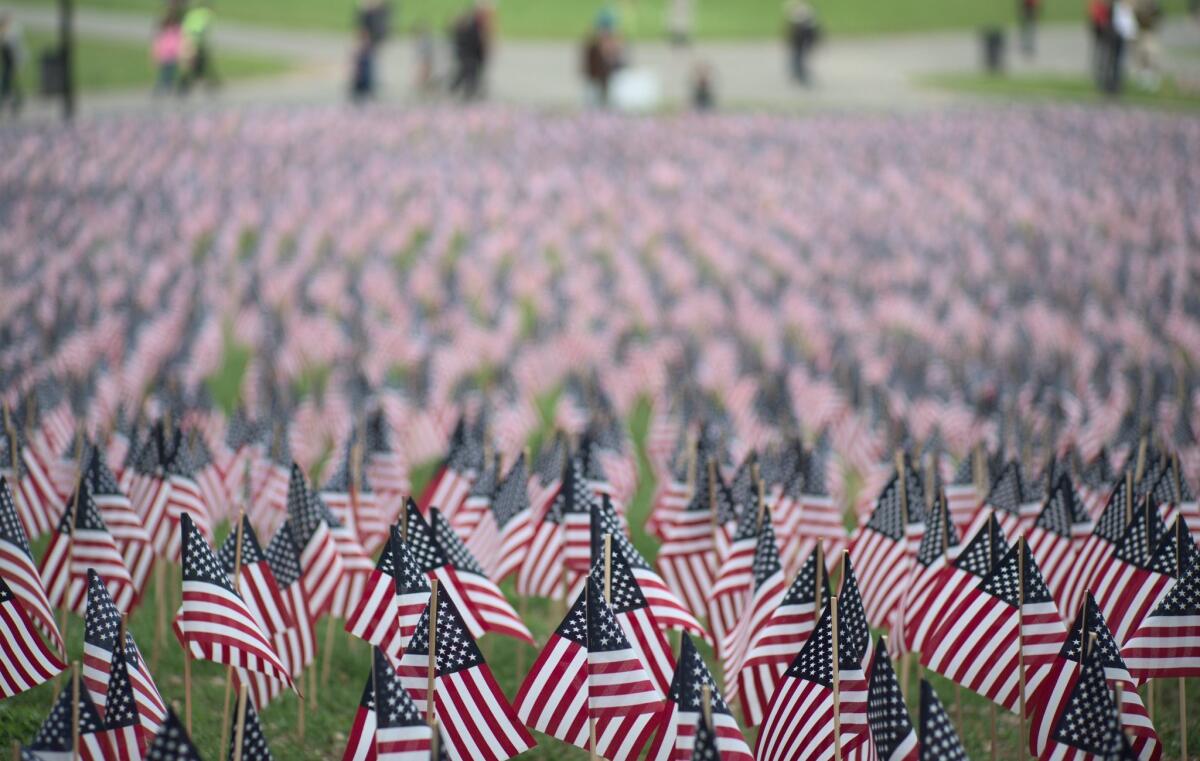July Fourth: A quiz on the making of the Declaration of Independence

- Share via
Remember how history class at the start of every school year began with the American Revolution and the Declaration of Independence? Some of it has long since blurred; some of it is fable. (See Question 11.) If you wanted to see the Declaration of Independence--the original--where would you travel? If you wanted to see the home of the man who drafted much of that document, where would you go? If you wanted to stick your tongue out at the colony that didn’t join the 12 original colonies in voting for this, which colony (state) would that be?
Take this quiz to see how much you know about this important document and to keep yourself from winding up in the wrong place if you take a history tour. Answers below. No peeking.
1. What was the name of the body that approved the Declaration of Independence on July 4, 1776?
A. Confederacy of the American Congress
B. The Confidential Congress
C. The House of the New United States
D. The Continental Congress
2. What colony (state) abstained from voting on July 2 that “these United Colonies are, and of right ought to be Free and Independent States”?
A. Nevada
B. New Jersey
C. New York
D. Virginia
3. When did the fighting begin that would develop into the Revolutionary War?
A. July 4, 1774
B. Aug. 31, 1774
C. Feb. 29, 1775
D. April 19, 1775
4. When the war began, most colonists sought:
A. Their freedom from Britain by separating from it
B. Only relief from oppressive taxes
C. Basic rights but still as part of Britain
D. Better quality tea than what was being shipped to them
5. The colony (state) that abstained from voting (see Question 2 above) did so because
A. It said it didn’t have permission to vote
B. It didn’t believe in the cause
C. It didn’t believe a new country could survive without help from the mother country
D. It feared a long and costly war would ruin its precarious economy
6. The delegates of that colony (state):
A. Never did join in with the others in voting for the Declaration
B. Did so but not until 1787, when it felt there was no more threat of economic sanctions
C. Voted to affirm on July 15
D. Slept on it the night of July 4 and came back and voted on it July 5
7. The man who wrote “A Summary View of the Rights of British America” was also the same man who largely wrote the Declaration of Independence. Who was it?
A. Patrick Henry
B. John Quincy Adams
C. Benjamin Franklin
D. Thomas Jefferson
8. After that writer was finished, members of the committee who had drafted him as the drafter added what to the document?
A. A condemnation of slavery
B. More charges against the king
C. Only one clause that said, “Now we are engaged in a great civil war”
D. Their seal of approval. They changed nothing
9. One of the most important sentences in the Declaration talks about rights. It says:
A. Every man has certain “unalterable rights”
B. Among the rights is the pursuit of a sound economic foundation
C. Among the rights are love and liberty
D. Among the rights is the pursuit of happiness
10. The original parchment document has been where since 1952?
A. National Archives exhibition hall in Washington, D.C.
B. Harvard University’s Crimson Tide Club
C. Philadelphia’s Independence Hall
D. Thomas Jefferson’s Monticello in Virginia
11. The Liberty Bell was rung to celebrate the Declaration
A. On July 4
B. On Aug. 16
C. On July 8
D. On Dec. 31
12. When was the last time the Liberty Bell was rung?
A. In 1846 in honor of George Washington’s birthday
B. On July 4, 1826, to mourn the deaths of Presidents Thomas Jefferson and John Adams, who died the same day
C. On Feb. 17, 1815, to mark the end of the War of 1812
D. On April 4, 1841, to mark the death, after but one month of service, of President Benjamin Harrison
Answers:
1 D
2 C
3 D
4 C
5 A
6 C
7 D
8 B
9 D
10 A
11 C
12 A
Source: Encyclopedia Britannica
Follow us on Twitter at @latimestravel
Sign up for The Wild
We’ll help you find the best places to hike, bike and run, as well as the perfect silent spots for meditation and yoga.
You may occasionally receive promotional content from the Los Angeles Times.




